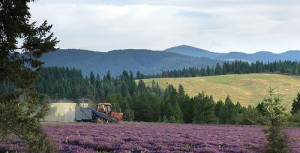Part 19: Finding Pure Essential Oils
9. Will the soil composition and location affect the plant that is grown there, thereby making a difference in the quality or chemical profile and aroma of the essential oil that is distilled?
Yes, there is usually a difference that can be small or big. Not any one thing dictates what the quality will be.
For example, lavender grown at low altitudes will produces low levels of lineal acetate and other low esters. True lavender has very small amounts of camphene. For example, the camphene in Lavandula angustifolia will vary from .2 to .5 percent, depending on both growing and distillation conditions.
10. Do changing weather conditions make a difference?
Yes! Too hot, too cold, too wet, too dry, wrong time of harvest, or even the way it is harvested can greatly affect and change the quality of the oil and the compound percentages!
A lot of people are selling essential oils and claiming they have the best, yet they have no background in essential oil production or quantitative or quality analysis. They rely on sales people for information, even though they are only buyers and sellers and know very little about oils.
So let’s go back to the original question. How do you know if an essential oil is pure? By now it should be quite obvious that understanding and determining oil quality and purity involve many things. You have to have knowledge and experience in many different areas, from the soil and weather, the method and best time of harvest, and the precise details of the extraction process of the final product that is put in the bottle.
To be continued . . .



Would you like to share your thoughts?
Your email address will not be published. Required fields are marked *